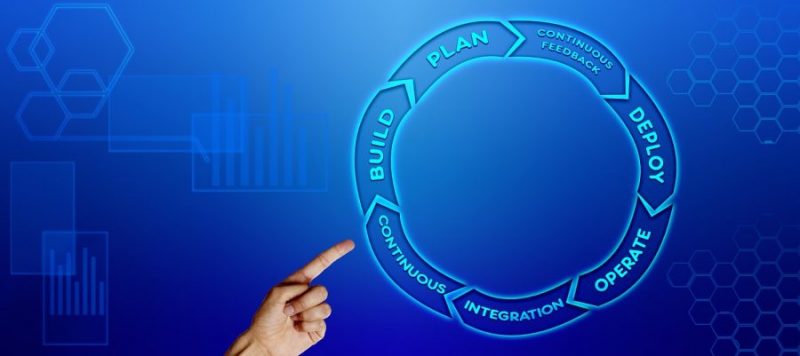A Software refers to a collection of instructions that notifies the computer how to work. A Software is also called a Computer Program. Each computer function requires a unique set of instructions. That is why there are multiple Software or Computer Programs available. Take the example of videos that are played on a computer. It can play the video only when a specific set of instructions is loaded on to the computer as a Software or a Computer Program. However, where does this Software come from? They are created by professionals through an extensive process. The process is known as Software Development. In addition to the Software Development term, we have also been hearing about the term, Software Development Lifecycle. Let us understand what the Software Development Life Cycle is?
Software Development Life Cycle
It refers to a structured and sequential process that a professional follows to create a Software or Computer Program. The entire process is broadly divided into seven steps.
- Project Initiation Phase – This is the first stage wherein the user submits a request for a desired Software to professionals.
- Requirement Gathering Phase – At this stage, professionals try to understand the user’s requirement in terms of the functionality of the Software. They also figure out the feasibility of the Software production in terms of technology and finance. If it is feasible to make the Software, professionals give the go-ahead and plan the project delivery schedule and resources.
- Design Phase – At this stage, the Software is designed based on inputs received from the user. Professionals write a set of instructions or codes. If required, the Software is also linked to other Computer Programs at this phase.
- Implementation Phase–At this stage, the completed software is installed or loaded on to the user’s computer.
- Testing Phase – The professionals test the software for required functionality, portability, and any other related issues. The bottlenecks are solved at this stage.
- Deployment Phase – The Software is ready to be used at this stage. The user receives training regarding the operation of the software.
- Maintenance Phase – Technology and user environment keeps changing from time to time. This calls for an upgrade in the existing Software. Maintenance Phase takes care of this.
After getting insight into the entire process of creating or developing a Software, let us understand what a Custom Software is and what is Custom Software Development Life Cycle?
Custom Software and Custom Software Development Life Cycle
Some of the users need specialized Software to support the functioning of their field of work, as off-the-shelf software do not have special features to cater to their needs. In such a scenario, the user approaches professionals and ask them to develop a specific Computer Program that can serve their purpose. Such tailor-made Software is known as Custom Software. This Software is more specific in nature. Unlike Generic Software, they can also be updated based on the user’s need, time, and budget. One of the examples of Custom Software is ‘Jira,’ which is a bug tracking software. It is used by Cloud Technology dependent users to track bugs or technical issues. Custom Software Development Life Cycle is the process of developing Custom Software. The stages of development of a Custom Software is the same as any other software. However, professionals follow different models for developing or creating a Custom Software or a Generic Software. Let us get an understanding of these models.
Software Development Models
Models define the basic strategy of an off-the-shelf Software Development or custom Software Development. However, the phases of the Software Development Life Cycle mentioned in earlier section remains the same but not necessarily in the same sequence. Few of the models are:
- Waterfall Model – It is the simplest and the oldest model. According to this model, all the phases of Software Development Life Cycle follow the same sequence as mentioned in the above section.
- V-Model – This model is an extended and improved version of the Waterfall Model. It follows the phases in the same sequence, but testing and validation are involved at each stage.
- Agile Model – This is the most modern approach that is being followed today. According to this model, the entire Software is developed after multiple iterations. With each iteration, continuous improvement is made in the Software based on feedbacks. This means that in the beginning a simplified version of the Software is produced following the phases of the Software Development Life Cycle. In the next iteration, the created Software goes through the same phases, and a modified version with advanced features is created. Thus at the end of multiple iterations, a complete Software solution is produced.
Conclusion
In the present world, developing a Software is a complex process that involves continuous inputs and feedback. The dynamic world of technology calls for continuous improvement and maintenance of the Software once it has been developed. An efficient software development service provider who can make a user’s life easy is the need of the hour.



